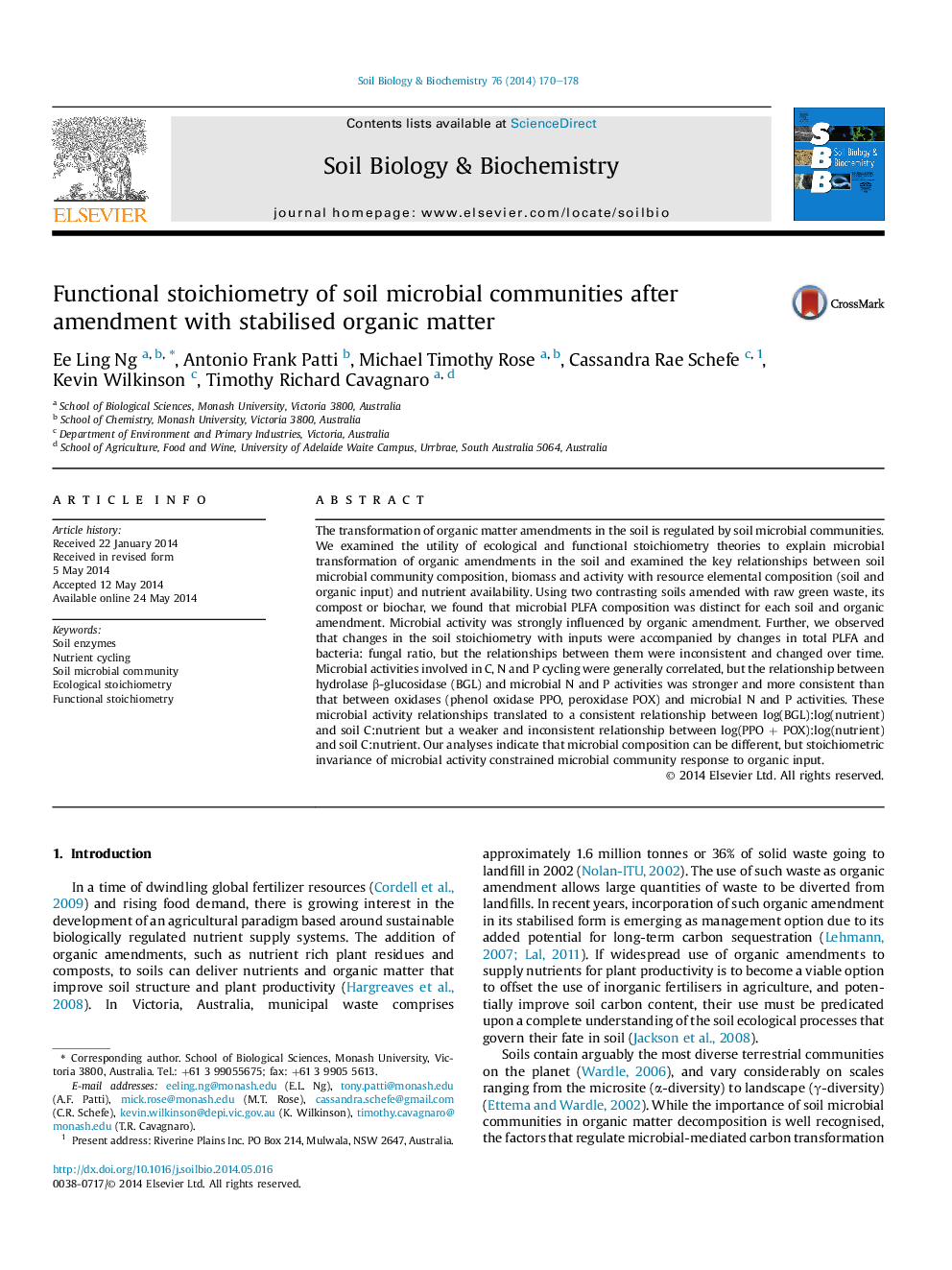| Article ID | Journal | Published Year | Pages | File Type |
|---|---|---|---|---|
| 8364620 | Soil Biology and Biochemistry | 2014 | 9 Pages |
Abstract
The transformation of organic matter amendments in the soil is regulated by soil microbial communities. We examined the utility of ecological and functional stoichiometry theories to explain microbial transformation of organic amendments in the soil and examined the key relationships between soil microbial community composition, biomass and activity with resource elemental composition (soil and organic input) and nutrient availability. Using two contrasting soils amended with raw green waste, its compost or biochar, we found that microbial PLFA composition was distinct for each soil and organic amendment. Microbial activity was strongly influenced by organic amendment. Further, we observed that changes in the soil stoichiometry with inputs were accompanied by changes in total PLFA and bacteria: fungal ratio, but the relationships between them were inconsistent and changed over time. Microbial activities involved in C, N and P cycling were generally correlated, but the relationship between hydrolase β-glucosidase (BGL) and microbial N and P activities was stronger and more consistent than that between oxidases (phenol oxidase PPO, peroxidase POX) and microbial N and P activities. These microbial activity relationships translated to a consistent relationship between log(BGL):log(nutrient) and soil C:nutrient but a weaker and inconsistent relationship between log(PPO + POX):log(nutrient) and soil C:nutrient. Our analyses indicate that microbial composition can be different, but stoichiometric invariance of microbial activity constrained microbial community response to organic input.
Related Topics
Life Sciences
Agricultural and Biological Sciences
Soil Science
Authors
Ee Ling Ng, Antonio Frank Patti, Michael Timothy Rose, Cassandra Rae Schefe, Kevin Wilkinson, Timothy Richard Cavagnaro,
